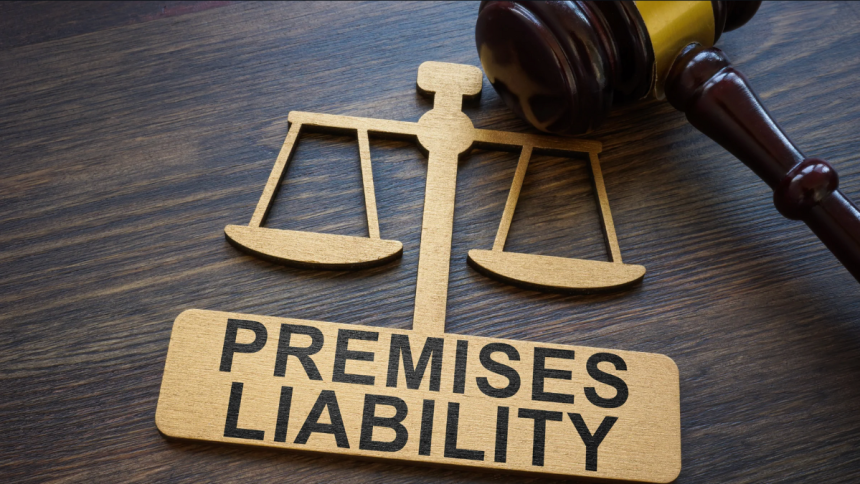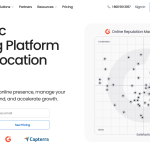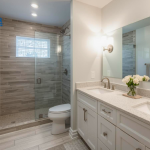When you’re injured on someone else’s property, the world suddenly feels uncertain and overwhelming. Premises liability determines whether property owners can be held responsible for accidents that happen on their land, from bustling shopping centers to quiet residential sidewalks.
Nearly 654,000 reported emergency department (ED) visits last year were the result of unintentional falls, which accounted for almost a third of all reported ED visits for trauma and injury. These numbers reveal just how common these accidents are and why understanding your legal rights matters so much when negligence strikes.
Now that you understand how premises liability affects millions of injured parties annually, let’s explore the specific legal foundations that determine whether you have a viable case and who can be held responsible.
Understanding Premises Liability Laws: Your Legal Foundation
Property owners aren’t automatically responsible for every accident that happens on their land, but premises liability laws create clear expectations for maintaining safe conditions. These laws establish when someone can be held accountable for injuries that occur due to dangerous conditions they knew about or should have discovered through reasonable care.
In Halifax, injury victims seeking compensation must consider legal factors unique to the region. The maritime climate creates specific hazards like ice formation and salt corrosion that property owners must address proactively.
With their expertise in addressing these regional challenges, Halifax Personal Injury Lawyers provide valuable guidance on navigating Nova Scotia’s complex premises liability rules and ensuring that your rights are protected. Local courts often see cases involving waterfront properties, historic buildings with aging infrastructure, and seasonal weather-related accidents that require specialized legal knowledge.
Core Legal Principles Behind Property Owner Responsibility
The foundation of any premises liability case rests on proving that property owners failed to meet their duty of care. This duty varies depending on whether you’re classified as an invitee, licensee, or trespasser when the accident occurred.
Invitees receive the highest level of protection because they’re on the property for business purposes or a public invitation. Property owners must inspect their premises regularly and fix dangerous conditions or provide adequate warnings. Recent legislative changes in 2024 have strengthened these protections, particularly for retail environments and public accommodations.
Property Owner vs. Tenant Liability: Who Bears Responsibility
Commercial lease agreements often create complex liability scenarios where responsibility gets divided between property owners and tenants. Many commercial property insurance policies will have a clause that requires businesses to have a snow removal contract in place. This requirement demonstrates how insurance companies recognize the high stakes involved in maintaining safe premises.
Residential rental properties operate under different rules, with landlords typically responsible for common areas while tenants handle their units. Mixed-use properties present the most challenging scenarios, often requiring detailed analysis of lease terms and local regulations.
With property owner responsibilities clearly defined under current laws, it’s crucial to recognize that premises liability extends far beyond traditional slip and fall accidents to encompass emerging safety threats you may not have considered.
Types of Premises Liability Cases: Beyond Slip and Fall Accidents
Slip and fall accidents remain the most common type of premises liability claim, but today’s legal landscape includes far more diverse scenarios than ever before.
Traditional Premises Liability Scenarios
Slip and fall accidents on wet surfaces, ice, and debris continue to generate thousands of claims annually. These incidents often occur in grocery stores, restaurants, and office buildings where spills aren’t cleaned promptly or warning signs aren’t posted appropriately.
Trip and fall incidents from uneven surfaces present different challenges, particularly in older buildings or properties with deferred maintenance. Falling object injuries and structural failures can result in catastrophic damage, especially in retail environments with high shelving or construction zones.
Emerging Premises Liability Issues
Technology has introduced entirely new categories of premises liability concerns. Cybersecurity breaches leading to physical harm might seem unlikely, but smart building malfunctions can trap people in elevators or cause automatic doors to malfunction dangerously.
Electric vehicle charging station incidents are becoming more frequent as these installations proliferate. Inadequate electrical work or poor placement can create shocking hazards or trip obstacles that property owners must address proactively.
While premises liability cases span diverse scenarios from cybersecurity breaches to swimming pool accidents, winning any case requires establishing three fundamental legal elements that determine your success or failure.
Essential Elements of a Strong Premises Liability Case
Success depends on proving four critical elements that work together to establish liability and justify compensation.
Establishing Legal Visitor Status
Your legal status when the injury occurred determines what level of care the property owner owed you. This classification significantly impacts your premises liability case strength and potential recovery amounts.
Children receive special protections under the attractive nuisance doctrine, which holds property owners responsible for dangerous conditions that might attract curious kids. Swimming pools, construction equipment, and abandoned buildings often fall under this heightened standard of care.
Proving Negligence in Property Maintenance
Property owners must either have actual knowledge of dangerous conditions or have discovered them through reasonable inspections. Documentation becomes crucial here – maintenance logs, incident reports, and witness statements can make or break your case.
The timeline matters enormously in establishing negligence. A spill that existed for hours creates stronger liability than one that occurred moments before your accident, which is why gathering evidence quickly is so important.
Once you’ve established the legal foundation of your premises liability case through proper visitor status, negligence proof, and causation evidence, the next critical step involves strategic approaches to maximize your financial recovery.
Maximizing Your Premises Liability Case Value
Comprehensive damage assessment goes beyond immediate medical bills to include long-term impacts that might not be obvious initially.
Comprehensive Damage Assessment Strategies
Lost wages calculations must account for both immediate time off work and potential career impacts from permanent injuries. Pain and suffering valuations depend heavily on how well you document the accident’s impact on your daily life and relationships.
Property damage often gets overlooked, but replacing damaged clothing, electronics, or other personal items adds up quickly and should be included in your claim.
Evidence Preservation Techniques That Win Cases
Security camera footage typically gets overwritten within 30-60 days, making immediate action crucial. Professional photographers can document scene conditions before property owners make repairs that might eliminate evidence of negligence.
Witness statements become less reliable over time as memories fade, so collecting contact information and initial accounts immediately after your accident provides invaluable support for your case.
Beyond standard damage calculations and evidence preservation, complex premises liability cases involving multiple defendants or comparative fault require sophisticated legal strategies that can make or break your recovery.
Advanced Legal Strategies for Complex Cases
Complex cases demand nuanced approaches that go far beyond basic negligence claims.
Comparative Fault Defense Mitigation
Many defendants try to shift blame onto injured parties by claiming they were careless or not paying attention. Expert testimony can establish that property owners bear primary responsibility regardless of the minor plaintiff’s actions.
Documentation that counters these arguments includes proper footwear choices, sobriety evidence, and witness accounts of reasonable behavior before the accident occurred.
Multi-Party Liability Scenarios
Construction sites present particularly complex liability scenarios where general contractors, subcontractors, property owners, and equipment manufacturers might all share responsibility. Determining which parties have the deepest pockets and strongest insurance coverage becomes a strategic priority.
Corporate parent company liability theories can sometimes reach beyond immediate property owners to access additional insurance coverage and assets for larger recoveries.
These advanced legal complexities underscore why partnering with experienced premises liability attorney professionals provides strategic advantages that self-representation simply cannot match.
Working With Personal Injury Lawyers: Strategic Advantages
Choosing to work with Personal Injury Lawyers can transform your case from a stressful ordeal into a strategic pursuit of justice and fair compensation, thanks to their deep understanding of local laws and experience with complex injury claims.
Immediate Case Action Plan
Experienced attorneys implement 24-hour evidence preservation protocols that protect crucial information before it disappears. Expert witness retention strategies ensure that accident reconstruction specialists and medical professionals can strengthen your case from the beginning.
Insurance notification procedures require careful timing and wording to avoid statements that might harm your case later during settlement negotiations or trial proceedings.
Litigation vs. Settlement Decision Framework
Settlement value assessment criteria help determine whether the insurance company’s offers represent fair compensation or whether pursuing litigation might yield better results. Trial preparation advantages include access to court procedures and rules that self-represented plaintiffs often struggle to navigate effectively.
Even with expert legal representation, your premises liability case’s success depends critically on understanding and meeting specific deadlines that vary significantly by state and case type.
Timeline and Deadlines: Critical Case Management
Timing can make the difference between a successful recovery and a dismissed case that leaves you without compensation.
Statute of Limitations Variations
State-specific filing deadlines create hard cutoffs that cannot be extended once they pass. Discovery rule applications might extend deadlines in cases where injuries or their connection to property negligence aren’t immediately apparent.
Minor plaintiff deadline extensions provide additional time for children to file claims, sometimes extending well into adulthood depending on state law and injury severity.
Pre-Litigation Investigation Timeline
Optimal evidence collection windows close quickly as witnesses move away, memories fade, and physical conditions change. Expert inspection scheduling must happen before property owners make repairs that eliminate evidence of dangerous conditions.
With statute of limitations deadlines and investigation timelines established, let’s address the most common concerns and questions that arise during premises liability cases to ensure you’re fully prepared for what lies ahead.
Moving Forward After Your Premises Liability Injury
Understanding premises liability empowers you to protect your rights when a property owner’s negligence causes injury. These cases require quick action to preserve evidence, careful documentation of damages, and strategic legal representation to navigate complex liability questions.
Don’t let time limitations or insurance company tactics prevent you from securing the compensation you deserve. Your recovery depends on taking decisive action while the law still protects your interests.
Common Questions About Premises Liability Cases
1. What are common premises liability claims?
Some of the common types of premises liability cases include: Slip and fall accidents, Crimes that occur because of inadequate security, and dog bites by unrestrained dogs.
2. How to avoid premises liability?
Perform timely weather-related maintenance of entry areas and parking lots. Clean up spills rapidly and use movable “Caution” signage as necessary. Install handrails on all stairways and ramps. Apply “traffic-yellow” paint on speed bumps and tire stops.
3. What if I were partially at fault for my accident?
Comparative negligence rules allow recovery even when you share some responsibility, though your compensation gets reduced by your fault percentage in most states.
Lynn Martelli is an editor at Readability. She received her MFA in Creative Writing from Antioch University and has worked as an editor for over 10 years. Lynn has edited a wide variety of books, including fiction, non-fiction, memoirs, and more. In her free time, Lynn enjoys reading, writing, and spending time with her family and friends.















